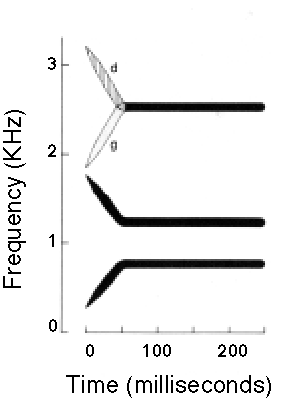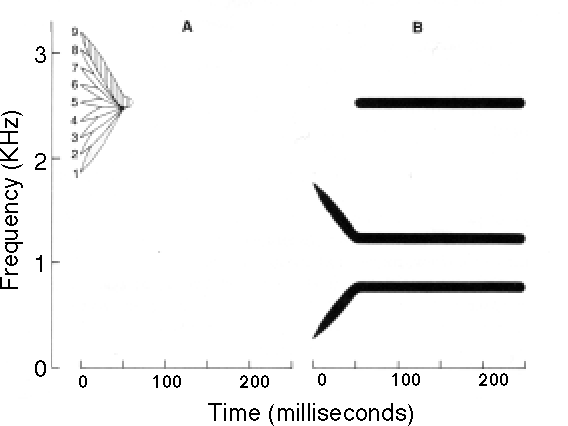Duplex Perception
The Setup
Experiments make use of stimuli in which direction
of F3 transitions distinguish [da] from [ga]. Without this
transition, the rest of the stimulus pattern is ambiguous between
[da] and [ga].

The critical formant transition (A below) is
presented to one ear, and everything else (the ambiguous "base", B
below) is presented to the other.

The two simultaneous
percepts:
- Listeners hear a syllable in the ear that gets
the base (B), but it is not ambiguous. Its identification is
determined by which of the nine F3 transitions are presented to
the other ear (A).
- Listeners also hear a non-speech "chirp" in
the ear that gets the isolated transition (A).
Implications
The fact that the same stimulus is simultaneously
part of two quite distinct types of percepts argues that the percepts
are produced by separate mechanisms, or modules, that are both
sensitive to the same range of stimuli.
In fact, the differing operational characteristics
of the modules can be seen in how they process common stimuli.
- The discrimination functions for the isolated
"chirp" and the speech percept are quite different, despite the
fact that the acoustic event responsible for both is the same. The
speech percept exhibits categorical perception, the chirp percept
exhibits continuous perception.
- If the intensity of the isolated transition is
lowered below the threshold of hearing, so that listeners cannot
tell reliably whether or not it is there on a given trial, it is
still capable of disambiguating the speech percept.
Back to Experimental
Evidence for Motor Theory


